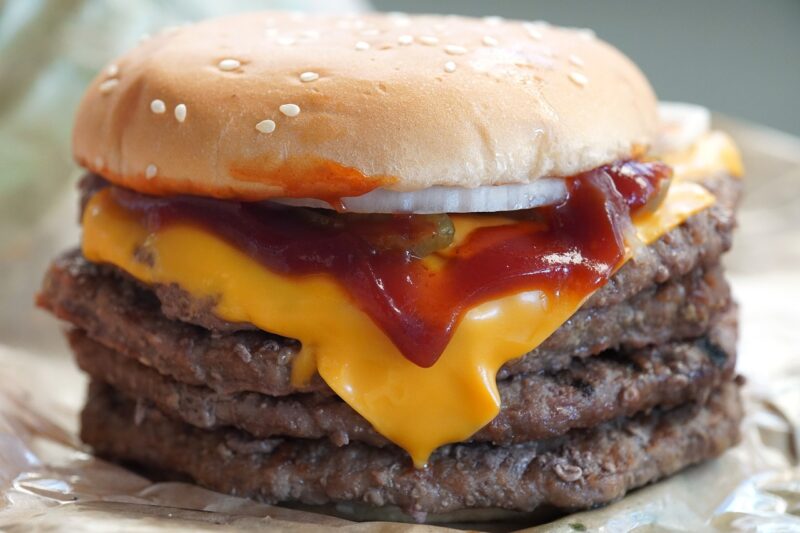The Story of Burger King: How It Challenges McDonald’s for Fast Food Supremacy
November 14, 2024

In the fast-food industry, few rivalries are as iconic as that of Burger King and McDonald’s. Both chains have profoundly shaped the landscape of quick-service restaurants and have distinguished themselves not only through their menus but also through their marketing strategies, customer engagement, and global expansion.
1. The Birth of Burger King: A Humble Beginning
Burger King, originally founded as Insta-Burger King in 1953 by James McLamore and David Edgerton in Jacksonville, Florida, began its life modestly. The founders aimed to provide a quick and delicious alternative to traditional dining. By 1954, the brand was rebranded to Burger King, emphasizing its core product—flame-broiled burgers.
The flame-broiling technique set the stage for Burger King’s unique selling proposition, which allowed their burgers to stand out from those cooked on flat-top grills common in many fast-food establishments. Early on, the company focused on providing customers with larger servings compared to competitors, introducing items like the Whopper in 1957 that would later become a staple in fast-food menus.
2. The Rise of McDonald’s: Setting the Bar
While Burger King was establishing its brand, McDonald’s quickly became the giant of the fast-food industry. Founded in 1940 by Richard and Maurice McDonald in San Bernardino, California, and later expanded by Ray Kroc, McDonald’s revolutionized the concept of fast food. By focusing on efficiency, a limited menu, and a unique brand, McDonald’s set the benchmark against which all fast-food chains would be measured.
The introduction of the golden arches, happy meals, and the popular Ronald McDonald mascot solidified McDonald’s position as a leader in the industry. By the 1970s, McDonald’s was a household name, with thousands of locations worldwide. This massive footprint and iconic branding placed immense pressure on Burger King to either differentiate itself or risk being overshadowed.
3. Competing with the Giant: Burger King’s Strategic Moves
As Burger King faced the formidable presence of McDonald’s, it needed to carve out its own niche and appeal to customers seeking alternative dining experiences. The company made several strategic moves in its quest for market share:
- Innovative Menu Offerings: Burger King has experimented with its menu over the years, introducing items like the Chicken Sandwich and the Impossible Whopper to cater to evolving consumer demands. This willingness to innovate has helped position Burger King as a brand that listens to its customers.
- Aggressive Marketing Campaigns: Burger King is known for its cheeky and bold advertising strategies. With campaigns like the “Have It Your Way” slogan and memorable commercials that poked fun at their competitors, Burger King effectively communicated its brand identity.
- International Expansion: While McDonald’s was expanding globally, Burger King latched onto markets where it could create a distinct brand presence. By tailoring its menu to fit local tastes, Burger King has managed to appeal to diverse consumer bases around the world.
These initiatives allowed Burger King to establish itself as a competitive alternative to McDonald’s, which continues to be one of its biggest rivals.
4. The Importance of Social Media in Brand Engagement
In the age of social media, both Burger King and McDonald’s have had to adapt their marketing strategies to engage younger audiences. Burger King has excelled at using humor and timely social media reactions to draw attention and create viral moments.
One such example was the “Whopper Detour” campaign where customers could unlock deals by being near McDonald’s locations. This clever strategy not only highlighted the competitive nature of the two brands but also illustrated Burger King’s commitment to customer engagement.
McDonald’s, however, remains the leader in social media presence, often utilizing influencer partnerships and community initiatives to maintain relevance.
5. Sustainability and Corporate Responsibility: The Future of Fast Food
As consumers become increasingly conscious of sustainability and corporate responsibility, both Burger King and McDonald’s have made strides to address these concerns. Burger King has introduced initiatives like the removal of plastic straws and commitments to sourcing sustainable beef, while McDonald’s has its own robust sustainability plan focused on reducing greenhouse gas emissions and sustainable packaging.
The ongoing challenge for both companies lies in balancing business growth while taking responsibility for their environmental impact. As the fast-food industry evolves, consumers will increasingly demand transparency and accountability from their favorite brands.
6. The Enduring Rivalry: Who Reigns Supreme?
While McDonald’s remains the largest and most recognizable fast-food chain, Burger King has managed to carve out a robust and loyal customer base. The rivalry between these two brands is unlikely to diminish anytime soon. With each brand constantly innovating and adapting, the competition remains fierce.
Ultimately, both Burger King and McDonald’s have their unique strengths, and consumer preferences will continue to dictate who comes out on top. Whether it’s Burger King’s flame-grilled burgers or McDonald’s efficient service, the battle for fast-food supremacy is one that will continue to captivate the public’s attention for years to come.
Conclusion: A Battle of Two Titans
The narrative of Burger King and its competition with McDonald’s is a testament to the enduring power of brand identity, innovation, and the ability to adapt. As the fast-food industry embraces new consumer trends, health consciousness, and social responsibility, both brands navigate their path toward supremacy. While some fans will always prefer the Big Mac, others will swear by the Whopper, ensuring that the battle for fast-food dominance remains as captivating as ever.
In the grand scheme, it’s the consumers who benefit from this rivalry, as they get to enjoy diverse options and creative culinary innovations from these two fast-food giants.







